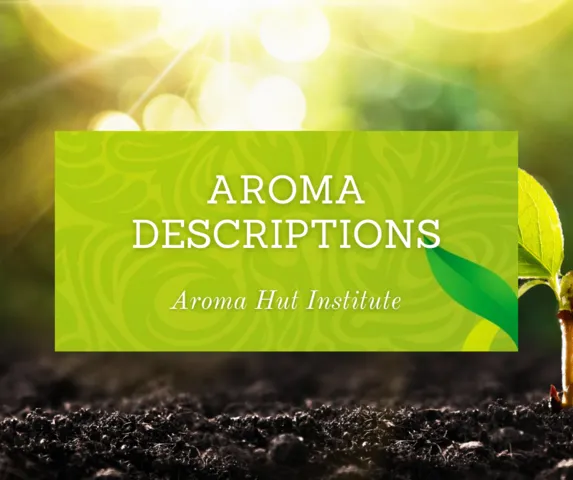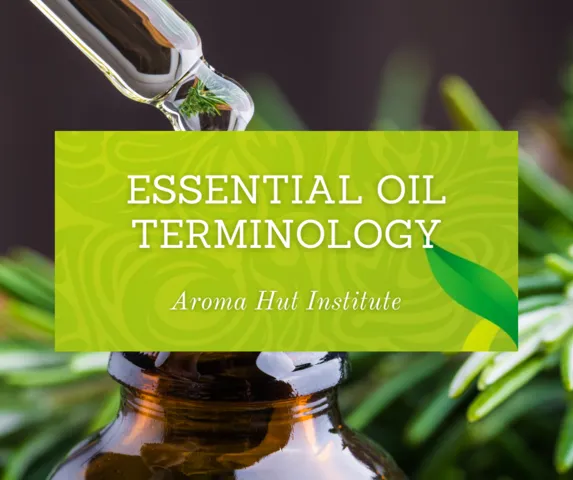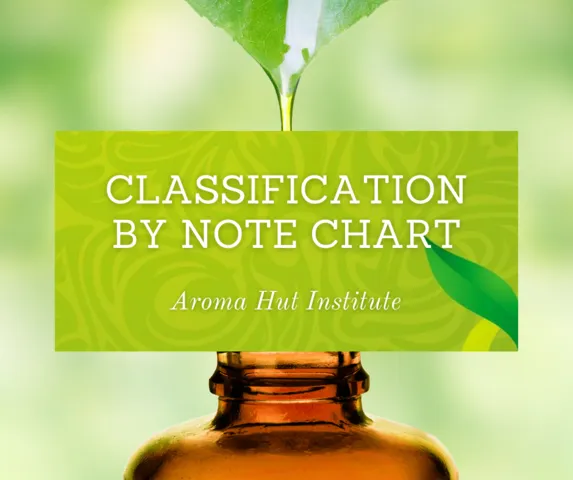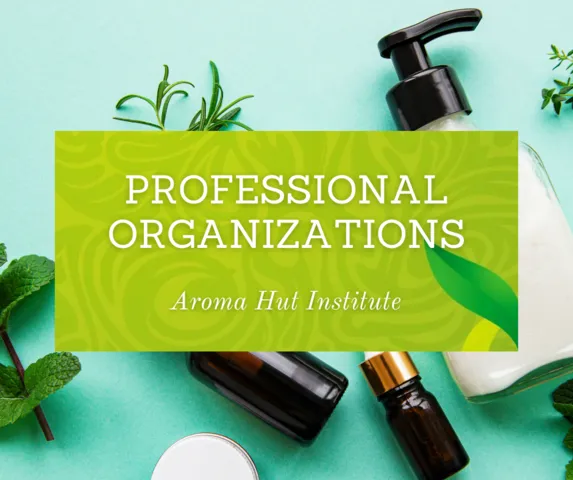CHEMICAL COMPOUNDS
What does an essential oil do to the body.
FAMILIES
What does the body do to the essential oil.
THERAPEUTIC
Which chemical components have therapeutic benefits.
MODULE THREE: BLENDING TECHNIQUES
MODULE FIVE: AROMAS AND BODY
MODULE SIX: ESSENTIAL OIL CHEMISTRY
Module 6 | Lesson 14
Chemical Family: Sesquiterpenes
Sesquiterpenes
Sesquiterpenes are composed of three isoprene units with five carbon atoms each, totaling fifteen total carbon atoms. Each one has varying hydrogen atoms depending on how many double bonds there are. Sesquiterpenes and monoterpenes are made up of only carbon and hydrogen. The name of sesquiterpene molecules end in “ene.”
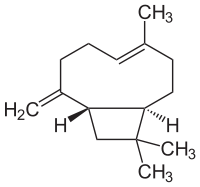 Pictured here is beta-caryophyllene, a chemical component in the sesquiterpene family. Essential oils high in sesquiterpene tend to be more emotionally grounding and calming. These oils tend to be heavier, typically middle to base notes with a longer-lasting aroma. This is because sesquiterpenes decrease their volatility (evaporation rate).
Pictured here is beta-caryophyllene, a chemical component in the sesquiterpene family. Essential oils high in sesquiterpene tend to be more emotionally grounding and calming. These oils tend to be heavier, typically middle to base notes with a longer-lasting aroma. This is because sesquiterpenes decrease their volatility (evaporation rate).
Sesquiterpenes are known to work as liver and gland stimulants because of the chemical components caryophyllene and valencene. Studies have shown that sesquiterpenes can pass the blood-brain barrier, enter brain tissue, and increase oxygen around the pineal and pituitary glands. Sesquiterpenes such as chamazulene and farnesol are highly anti-inflammatory and antibacterial. At the same time, farnesol is known to be anti-viral in action. Chamazulene is found in German chamomile, tansy, and yarrow.
Sesquiterpenes Component Family
The sesquiterpene chemical family is found in certain essential oils; in some cases, over 50% of the oil is sesquiterpenes. Caryophyllene gives a strong woody scent to many essential oils such as clove, lavender, thyme, black pepper, Melissa, cinnamon, and ylang-ylang. Some sesquiterpenes are unique to a single oil. Sesquiterpenes also increase the half-life of smaller light molecules, both aromatically and therapeutically. These are called “fixing oils” and are frequently used by perfumers to help make a fragrance last longer. Essential oils such as myrrh and sandalwood both contain over 90% sesquiterpenes.
| Chemicals | Properties |
|---|---|
| Caryophyllene (α) | anti-inflammatory, antitumoral |
| Caryophyllene (β) | analgesic, anti-inflammatory, antispasmodic, antitumoral, antiviral, immunostimulant |
| Cedrene | Skin penetration enhancer |
| Curcumene | anti-inflammatory, antitumoral, antiulcerogenic, lowers triglycerides |
| Sesquiphellandrene (β) | antitumoral, antiviral |
| Zingiberene | antiulcerogenic |
Sesquiterpene Chemical Components and Oils that Contain Them
| Chemicals | Essential Oils |
|---|---|
| a-bergamotene | Fleabane (Conyza Canadensis) |
| Bisabolene | Myrrh (Commoniphora myrrha) |
| g-cadinene | White Fir (Abies grandis) |
| Chamazulene | Blue Tansy (Tanacetum annuum) |
| a-Copaene | Rosewood (Aniba roseaodora) |
| a-Curcumene | Ginger (Zingiber officinale) |
| y-Curcumeme | Helichrysum (Helichrysum italicum) |
| Elemene | Elemi (Canarium luzonicum) |
| a-farnesene | Valerian (Valeriana officinalis) |
| b-farnesene | German Chamomile (Matricaria recutita) |
| Gualene | Patchouli (Pogostemon cablin) |
| Humulene | Sage (Salvia officinalis) |
| Longifolene | Vitex (Vitex negundo) |
| a-selenene | Celery (Apium graveleons) |
| a-Ylangene | Ylang Ylang (Cananga odorata) |
Oils that contain Sesquiterpenes
- Black Pepper (Piper nigrum)
- Cedarwood (Juniperus virginiana)
- German Chamomile (Matricaria recutita)
- Ginger (Zingiber officinale)
- Helichrysum (Helichrysum italicum)
- Myrrh (Commiphora myrrha)
- Opopanax (Commiphora guidotti)
- Patchouli (Pogostemon cablin)
- Spikenard (Nardostachys jatamansi)
- Vetiver (Vetiveria zizanioides)
- Ylang Ylang (Cananga odorata forma genuina)
Sesquiterpenes’ Therapeutic Properties
Therapeutic Properties
- Anti-fungal: German chamomile, myrrh, patchouli, spikenard, vetiver
- Analgesic: black pepper, German chamomile, ginger, Helichrysum, myrrh, ylang ylang
- Antiseptic: black pepper, cedarwood, ginger, German chamomile, myrrh, opopanax, patchouli, vetiver, and ylang-ylang
- Anti-inflammatory: black pepper, cedarwood, German chamomile, ginger, Helichrysum, myrrh, opopanax, patchouli, spikenard, ylang-ylang
- Antispasmodic: German chamomile, ginger, Helichrysum, patchouli, opopanax, spikenard, vetiver
- Antibacterial: Black Pepper, Cedarwood, German Chamomile, Ginger, Myrrh, Opopanax, Patchouli, Spikenard
- Cicatrisant: German Chamomile, Helichrysum, Myrrh, Patchouli
- Cooling: German Chamomile, Patchouli, Vetiver, Ylang Ylang
- Grounding: Cedarwood, German Chamomile, Myrrh, Opopanax, Patchouli, Spikenard, Vetiver
- Hypotensive: Ylang Ylang
- Sedative: German Chamomile, Myrrh, Patchouli, Spikenard, Vetiver, Ylang Ylang
- Warming: Black pepper, Ginger, Myrrh
Safety Considerations
Sesquiterpenes are generally safe and not skin irritants unless oils have oxidized. Essential oils high in sesquiterpenes have a long shelf life, typically 6-8 years or longer.


